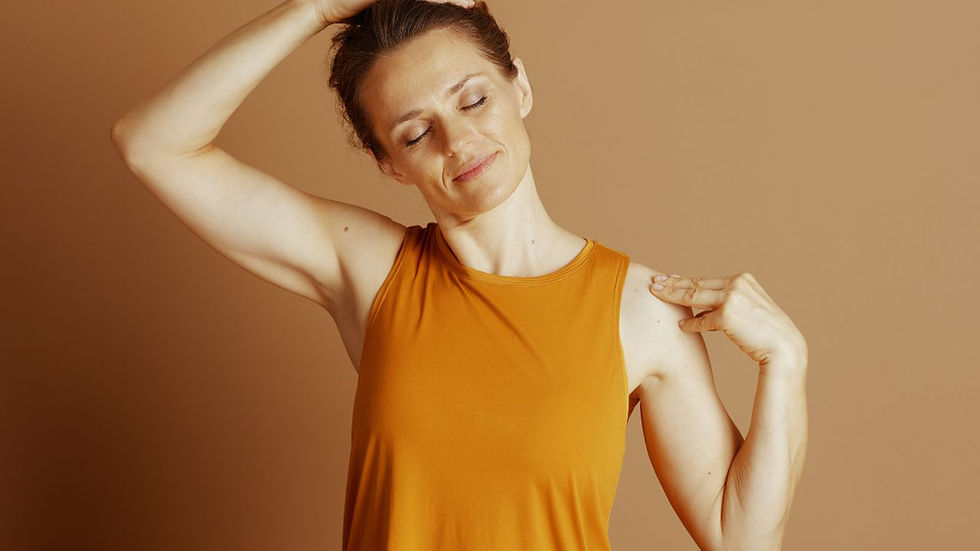Good posture - what is it?
- Ken Belveal
- Nov 1, 2021
- 2 min read
How to know if you have good posture and how to keep it.

Alignment

Posture is the result of alignment of certain aspects of the body. In a standing position and looking from the side the ear is aligned over the shoulder, the shoulder is aligned over the center of the hip. The hip is aligned over the knee and the knee is aligned slightly in front of the ankle bone. From the front, a plumb line should, ideally, dissect the body directly in half with weight equally distributed on both feet.

Why isn’t the spine straight?
It may seem that the spine, when viewed from the side, needs to be straight to accomplish this but that is not the case. The spine is designed with a series of S curves. This is so the body can more readily absorb shock and bear weight without breaking. Think of bed springs, which have a lot of curves, compared to a straight piece of metal. The springs will bend and compress and recover more readily when confronted with stress compared to the straight one which is more likely to snap, or bend permanently, under the same pressure.
How much curve?
The amount of curve in each S is the next thing to consider. Too much or too little curve and the supporting muscles strain and tense to try to maintain some sort of balance. The body likes to maintain a sense of balance - think holding an apple on top of your head – because it takes less energy and lets muscles relax.

The problem…
is humans live in a world of constantly sitting, working at a desk, typing on a computer or looking at a cell phone. All things designed to shorten or lengthen or weaken muscles leading to aches and pains if not addressed with releasing, stretching and strengthening techniques.
The Stand Up Str8 system is designed to address these muscle imbalances especially around the neck, upper back and shoulder area. Try this movement:
Stand up against a wall with your head, shoulders and buttocks against the wall.
Keeping your head level, make a double chin and try to touch the back of your neck to the wall. You should feel this in the back of your neck and in between your shoulder blades. Hold it for a count of 5 and relax.
Repeat for 10 repetitions.
This can be done several times a day. It is both a stretching and strengthening movement to reduce forward head, which is a major cause of neck aches and tension headaches. It also has the benefit of moving the head backward to balance over the shoulders leading to good posture.
Now you're ready to strengthen the muscles between the shoulder blades to keep your shoulders aligned permanently. The Hands-Free Middle Back Strengthener is an easy-to-use device that can be done anywhere. And it only takes 2 minutes a day! Get yours here.
Enjoy!








Comments